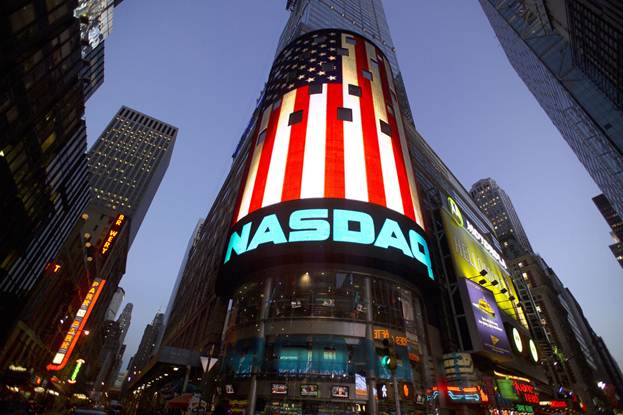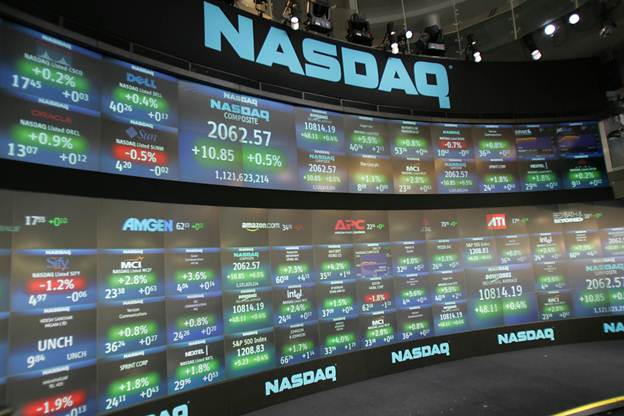
Investors have benefited throughout
the years from trends that have almost magically lifted Wall Street from the
doldrums to lofty heights. These usually involved a spike in the sales of a
domestically produced commodity, like in the mid-80s when record auto sales
drove the Dow Jones Industrial Average to post an all-time high of 2002 points
in early January of 1987, or the years of prosperity in the market seen after
World War II had ended. But historically, nothing came close to the investor
fervor that began in the mid90s.
The Information Technology Bubble, or
Dot Corn Bubble, began in earnest with the rapid popularity of the internet as
a means of communicating, trading information and doing business. AOL and
Netscape, among other service providers, were making it easier and easier for
“regular” people to access the internet via any (somewhat) reliable computer
and a phone line. In December of 1995, according to research from IDC, there
were an estimated 16 million people with access to the internet—O.4% of the
world population. By December of 1999, that number rocketed up to 248 million
people, or 4.1% of the world population. Suddenly, there was a place with a
worldwide captive audience that could be tapped for anything from book and CD
sales to personal services or even banking. This captivated venture capitalists
and investors alike and, coupled with low interest rates in the mid-90s, made
funding a “technology” start-up easy.
Most internet start-ups at this time
relied heavily on operating at a loss in order to gain market awareness. The
seemingly endless potential that the internet possessed, however, along with
the exponential growth of the “online population’ spurred investors to grab any
and all dot-corn and “technology” companies that offered shares on the open
market. Since it was nearly impossible to valuate these companies, investors
became less cautious when choosing stocks to purchase, concentrating instead on
the unreal returns that so many tech companies were generating. With this vast
number of people getting “rich” in the market, regular investors who had
traditionally only used a broker for investment decisions or kept money safely
tucked in an index-based mutual fund were now speculating on shares of
companies with horrid P/E ratios and zero revenues. When the market could no
longer bear the nonexistent growth and these once promising businesses filed
for bankruptcy, the house of cards began to collapse.
Companies like Pets.com, an operation
with a high profile advertising campaign (the Dotcom Boom did not lack creative
marketing) and plenty of recognition, saw $300 million in capital wiped away
and a successful IPO wither into liquidation in under a year — ultimately
becoming one of the symbols of the technology collapse. One by one, former
darlings of the street like Kozmo.com (one hour delivery), Flooz.com (an
attempt at establishing internet currency) and the notable Globe.com — one of
the first ever social networking sites and a company that posted the largest
ever first day gain of any IPO of any company up to that point — collapsed in
ruins, hemorrhaging large amounts of cash and ruining venture capitalists as
well as portfolios.
On March 16, 1999 as the first cracks
were appearing in the Tech bubble, the Dow broke an all-time single-day record
by rising almost 500 points in one day to 10,630. Less than a month later, the
Dow suffered its largest one-day drop up to that point, falling 618 points or
5.66%. The effects were devastating and the DJIA, which passed the 11,000-point
only in 2006, took a long time to recuperate.

And now, over a decade later, many
analysts are seeing signs of a new technology boom. Indexes like the tech heavy
Nasdaq Composite are pushing ever higher and investors have been happily
pouring into companies showing record profits, like Apple Inc. (NASDAQ: AAPL)
which has been showing ever increasing record profits on each quarterly
statement, or companies that merely have the potential to reap enormous
profits, like Facebook and its estimated $75 to $100 billion IPO. But, as
philosopher George Santayana once declared, those who cannot remember the past
are condemned to repeat it. Companies like SalesForce.com (NYSE:CRM) are
trading at over $140 a share but have a market capitalization over 8 times its
earnings. Pandora (NYSE: P), the online radio player and automated music
recommendation service, doesn’t even have a PIE ratio, is not yet profitable
and trades over 9 times its earnings (almost $14 a share).
Although not as egregious as it was in
the late 90s, technology is once again becoming a trendy speculative
instrument, irregardless of earnings.., or the lessons supposedly learned from
recent history.